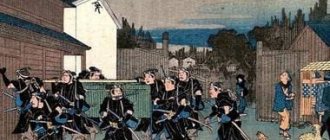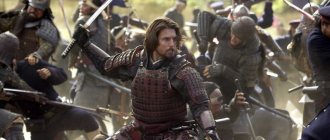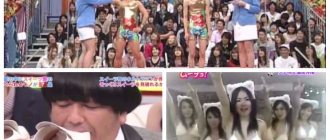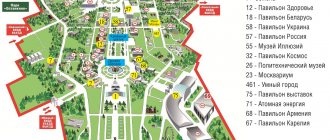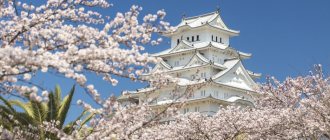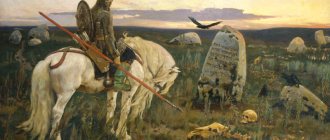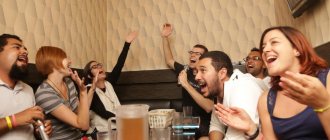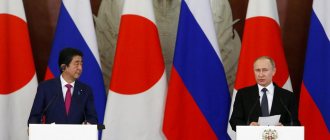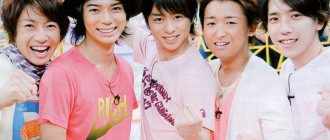But this was wrestling.
In the 2000s, channel 7TV showed a series of programs about Japanese wrestling in a regular boxing ring. Bushido fans will forever remember Nobuhiko Takada, Gary Albright, Salman Hasimikov and other stars. Few people thought that Bushido is just regular wrestling. The battles were just made more realistic than in America.
Wrestling, but not really
Bushido (translated from Japanese as “way of the warrior”) is the television title of a Japanese show, adapted for European viewers. The federation that held the fights was called UWFI - Union of Wrestling Force International. The promotion's founders were legendary American wrestler Lou Thesz and a group of Japanese wrestlers led by local legend Nobuhiko Takada, who eventually became the main star of Bushido.
“We are making a new league and want to make a breakthrough in wrestling. Our fights are much more interesting to watch than classic American wrestling. We have a competitive aspect in the foreground,” said bushido co-founder Yuko Miyato.
Bushido was different from classical wrestling. In Japanese fights there was no explicit script, and the winner was determined according to sporting principles. Unlike wrestling, Bushido had clear rules - no jumping off ropes or breaking chairs on your head:
• Hitting with fists is prohibited - only with an open palm;
• Elbow strikes to the head are prohibited;
• Head impacts are prohibited;
• It is prohibited to kick a prone opponent if he is not defending himself;
• Almost all painful locks and chokeholds, as well as throws, are allowed.
Bushido combines several martial arts - kickboxing, judo, wrestling, karate and others. Amplitude throws, powerful kicks and crazy attacks with windmill hands often led to severe injuries and blood. The broken nose of the Japanese fat man Tatsuo Nakano became a symbol of the promotion.
The fights lasted from 15 to 60 minutes - the duration depended on the importance of the fight. Before the start of the match, each wrestler received from 15 to 30 points. Points were deducted for:
• Knockdown – 3 points;
• Accented throw over oneself – 1 point;
• A painful or choke hold could be interrupted by touching the ropes with any part of the body - 1 point was also deducted for this.
Thus, there were several ways to win:
• By points. If all points are deducted either at the end of time;
• Knockout;
• Submission;
• Disqualification of an opponent for an illegal strike.
Pairs fights became a special spectacle in UWFI. They fought 1v1 in the ring, but at any moment you could touch your comrade and pass the baton - in case of fatigue, injury or for other reasons.
Tournaments attracted thousands of spectators
Bushido tournaments were held in all major cities of Japan. The largest events attracted more than 50 thousand spectators. And the Budokan, an arena in Tokyo that was built in the 60s for Olympic judo competitions, became a cult venue for the UWFI. There was never less than 10 thousand crowds at the Budokan, and the queues for tickets lined up several hundred meters long. Some tournaments attracted 50-60 thousand people.
During bushido fights, as at other wrestling events, the Japanese public behaved calmly. The fights took place in a chamber setting, and the audience exploded only during spectacular receptions and when the winner was announced.
“When I first got into the Japanese ring, it took me a long time to get used to it and understand what was happening. Why so quiet? No one came? Or are we in the theater? Japanese fans are very specific. But they are well versed in wrestling – specifically in the aesthetic side,” said bushido champion Super Vader.
In Japan they really love wrestling, and bushido fighters are idols. T-shirts with Takada's photo and autograph cost $100 each and sold out within a couple of hours. The price for a poster is about 40 dollars. “At first the fights were more of a show, but the public was thirsty for blood. The further it went, the more truth there was. Everything became serious - real battles and real danger. They were no longer broadcast on television - the area was closed, even the betting machine was open. We tried to use exotic techniques so that the audience would like it. We performed every day, and this is a colossal load.
I remember the day: incredible heat, the ring under the scorching sun. After the fight, I was still sitting there signing about a thousand pictures - each cost 40 dollars. This was part of my contractual responsibilities. They paid well, of course, but anyone could get seriously injured. One day I received such a powerful kick that I only came to my senses in the locker room. There I decided: it was better to spend my old age not in a wheelchair, but as a normal person on my feet. No amount of money can justify this. That’s why I stopped,” said Russian wrestler Viktor Zangiev.
Every country had megastars, and a Russian fighter got into Street Fighter
One of the organizers and long-time champion was Nobuhiko Takada, a cult fighter of his time, who was revered in Japan no less than the now conventional Khabib Nurmagomedov. Unlike most other Japanese, Takada was both large and fast, so he was ranked both in wrestling and at a distance. In UWFI he practically did not lose, but later in MMA he looked like a fairly average fighter.
But among the Russian public, the favorite was Kazuo Yamazaki - he was much inferior to Takada in terms of preparation, but he performed mind-blowing moves. I think more than one bushido fan has sprained a ligament trying to repeat something similar with an invisible opponent in the yard.
In the American team, fat Gary Albright stood out, looking like a giant Alexei Andronov. He crushed the slender Japanese en masse. His principled fights with Takada were real bushido gold, looking like a good sports drama. Another top guy from the USA was Super Vader, a wrestler who was still in the WWF.
And the Russians were represented by wrestlers Viktor Zangiev, Salman Khasimikov, Vladimir Berkovich and several other distinguished men who escaped from the collapsing USSR in 1989. The most memorable and memetic of them was Zangief - the Japanese loved him more than anyone else. A stern but charismatic Ossetian mustache with a hairy chest. The situation is similar to the one when the Poles made memes about Stanislav Cherchesov.
Zangief became so popular that a hero named Zangief was added to the classic fighting game Street Fighter II. In this image, Victor Zangief even had a cameo in the Disney cartoon “Wreck-It Ralph.” It’s quite interesting that the real Zangief was calmly teaching children freestyle wrestling at that time.
Some fights have become classics
There were several vectors of confrontation in Bushido that became classics.
• Japanese fights among themselves. Takada from Yokohama had his fans, Sakuraba from Katagami had his own;
• The battles of the Japanese against America are a classic confrontation between the West and the East;
• USA vs Russia – another classic in which the majority of Japanese were rooting for the Russians.
Promotion superstar Nobuhiko Takada held the belt for more than two years. The Japanese looked like the most balanced UWFI fighter: good defense against punches and techniques, high-quality wrestling and the main weapon – versatile kicks. Among the Japanese, only Kazuo Yamazaki could impose a more or less equal fight on Takada.
American wrestlers became Takada's main antagonists. The first to encroach on his title was the big guy Gary Albright - “The Man with the Scar from Montana.” The 150-kilogram wrestler always performed in red tights and amazed with his power: “Gary was very strong. He lifted us like feathers and smeared us around the ring with all his might. Once a guy broke his cervical vertebrae - the blow to his head after throwing back was so strong. Albright is a living human force. I doubt that he ever worked hard in the gym - nature itself gave him power. It seemed like he could throw us with one finger,” recalled Yoji “Zebra” Anjo.
Leon White is the second American giant who terrified everyone. The whole world knew him by his nickname - Super Vader. The 170-kilogram bald guy in the mask defeated both Takada and Albright in bushido. In 1994, Vader won the UWFI Grand Prix and became the first non-Japanese champion. True, after 8 months Nobuhiko returned the belt, winning in a rematch.
Russians were very loved
The strength of our fighters was known all over the world. And the Japanese understood that it was the powerful Russians who could increase the popularity of wrestling. In 1989, Japanese matchmakers selected from 50 wrestlers who had recently retired or were preparing to do so in the near future. Zangief said that the first to contact the Russians was the legendary wrestler Antonio Inoki - the same one who met Muhammad Ali in the ring in the 70s: “He himself came, organized, watched, chose. I think the final decision was his. He was a real leader, he had his own TV channel, and I even heard that he had connections in the Japanese parliament. He generally has a lot of connections, a lot of sponsors.”
The scouts selected five: Salman Khasimikov, Viktor Zangiev, Vladimir Berkovich, Shota Chochishvili and Vakha Evloev. Arriving in Japan, all the wrestlers went to a training center where they were taught basic wrestling techniques. “I was constantly dizzy. It was like this: you jump and fall from one and a half meters on your back. Physically, it was difficult even for the older guys, and even more so for me. The training was carried out on wrestling mats. If you were afraid, they said: “Throw out your legs and fall.” And like this for almost the entire training. We fell, we fell, we fell, we fell... We learned,” explained Zangief.
Salman Khasimikov in one of his interviews revealed the financial side of the issue a little: “I don’t know on what basis the participants were selected. They signed a contract with me for three years. I agreed for a banal reason: I did what I was good at and received good money for it for a Soviet person. I was paid about five thousand dollars per fight. Before that, I was sitting on 87 rubles for almost six years. Without hesitation, I flew to Japan when the offer came.”
The first three eventually performed in UWFI, and Khasimikov and Zangiev became very popular. Salman impressed with his power, despite his impressive age. Zangief captivated everyone with his acrobatic stunts and insane submissions.
The Japanese organizers set a clear condition for the Russians: they had to fight in tights with the inscription “USSR” or the coat of arms of the Union. “The team of Soviet wrestlers was called the “Red Bull Army.” Many fights were staged, otherwise my opponents would not have had a chance. The scenario was simple: good always triumphs over evil. But we seriously prepared physically and psychologically for these fights,” says Khasimikov.
The paired battles between the USA and Russia turned into a real uncompromising fight. Khasimikov and Berkovich fought for Russia, and the big Albright and future UFC champion Dan Savern fought for the USA. Often, fights began while the ring announcer was working.
The Russians won both matches – and the matches followed the same scenario. Berkovich (the worst of the four) exhausted both opponents (at least, commentator Mikhail Zakharov, whom many still confuse with Nikolai Fomenko, convinced of this), and Khasimikov finished off. Both fights ended in victories for the Russians via painful hold.
Zangief became a star in singles matches. Even if Victor lost, he managed to carry out a couple of incredible sketches. His arsenal included the usual suplexes, windmill throws, bridged submission exits and a crucifix choke. No one had ever performed anything like this before Zangief.
“I think people in Japan still remember me. I recently met a Japanese man in Moscow and was a little surprised when he smiled and turned to me: “Victor-san?” And another time a guy from New Zealand heard my last name and asked: “Aren’t you the one?” Immediately understanding what he was getting at, he said: “Well, that one.” So he immediately took an autograph and took a photo,” Zangiev recalled.
In 1995, UWFI began to have financial problems. To rectify the situation, Bushido wrestlers began to integrate with other promotions, including NJPW. Lou Tez refused to cooperate with the UWFI - the last tournament was held in December 1996.
Wrestlers from Bushido have joined other promotions. Most of them remained in Japan, some wrestlers completed their careers, many switched to MMA and kickboxing.
They are still looking for the legendary commentator, but it is not Fomenko
Yes, Nikolai Fomenko is also a kind of legend and meme. Many people watched wrestling not because of the decorated fighters, but to hear the famous: “Oh-oh-oh-oh-oh-oh-yo-yo-oh” and other great punches. That rare case when the commentator provided an honest 50% of the experience.
Despite the fact that the voice of the Russian bushido commentator is similar in timbre to Nikolai, it was not him. The craziest esotericists even recognized the intonations of the great mustache Mikhail Kozhukhov from the Travelers Club. A crazy theory that people really believed in. And again close in sound, but also missed.
In fact, the fights were commentated by Mikhail Zakharov, best known for hockey and his work at Avtoradio. He didn’t yell like Fomenko, but measuredly talked about the progress of the battle and sometimes joked, for example, about the zebra pants of the Japanese Yoji Anjo. It’s even strange that his work is remembered with such warmth - in fact, Zakharov did not do anything supernatural. There is some irony in the fact that he is remembered for his pleasant timbre, but is constantly confused with other people.
What's wrong with them now?
• Nobuhiko Takada made his MMA debut in 1997 and took part in the first Pride tournament. True, he did much worse in mixed martial arts than in bushido - 2 wins, 2 draws, 6 losses. At the same time, Takada defeated the first UFC champion Mark Coleman and drew the fight with Mirko Cro Cop.
After retiring, Takada headed the wrestling promotion Hustle, and now works as a matchmaker in the main MMA organization in Japan, Rizin.
• Super Vader spent 20 years bouncing between top Japanese promotions and WWE. In the mid-2000s, Leon went on a drinking binge and lost his wife. Around the same time, health problems began.
In 2011, Vader underwent knee replacement surgery, but during the operation the doctors made a mistake - an infection got into his leg through a wound. For six months, White was confined to a hospital bed. Soon after his recovery, Leon flew to Japan for an autograph signing. During the flight, the wrestler became ill, he lost consciousness and remained in a coma for more than a month - during which time he lost about 50 kg.
Three years ago, Vader was diagnosed with heart failure. The wrestler said that he was not going to quit wrestling and wanted to die in the ring. Last June, Super Vader died: pneumonia caused a heart complication.
• Gary Albright moved to All Japan Pro Wrestling (AJPW), where he became a two-time doubles champion. In early 2000, Gary was wrestling at a wrestling show in Pennsylvania and lost consciousness during the fight. They could no longer bring the fighter to his senses - he died of cardiac arrest. The police did not investigate the case because Gary died not from his injuries, but from natural causes.
Albright, like Vader, had heart problems due to obesity and suffered from diabetes. Gary was going to retire before 2002 and open a wrestling school in Montana.
• Japanese number two Bushido Kazuo Yamazaki returned to New Japan Pro Wrestling (NJPW) and won several big doubles matches. Kazuo retired from wrestling in 2000 and still trains striking techniques for NJPW wrestlers. During tournaments he works as a commentator on the TV Asahi channel.
• Yoji Anjo tried kickboxing and MMA, but “Zebra” was better at wrestling. Yohji is winless in six MMA fights and has lost three times in the UFC. In the 2000s, he helped Takada manage Hustle, and only finished wrestling in 2015 - he was 46 years old and 35 kg healthier than his Bushido days.
• The tallest (196 cm) bushido fighter, Yoshihiro Takayama, also failed in MMA (1-4), but competed successfully in wrestling until 2017. Two years ago, Takayama performed a difficult move during a match, landed poorly on his head and broke his neck. Yoshihiro found himself bedridden - paralyzed from the neck to the toes, but able to breathe on his own. According to doctors, there is no hope for recovery - Takayama will never walk again.
• Dan Savern successfully combined his wrestling career with mixed martial arts. In total, the American had more than 120 fights in MMA (101 victories) and took revenge on the Russians for defeats in bushido, defeating Oleg Taktarov twice. He became the champion of UFC 5 and is a member of the Hall of Fame of the main MMA promotion in the world. Until now (Dan is already 60 years old) he participates in wrestling. This spring he lost to former UFC champion Frank Mir at the Bloodsport tournament - for Frank it was his debut wrestling match.
• 4-time world champion in freestyle wrestling Salman Khasimikov did not compete in wrestling after the closure of UWFI. Now he lives in Moscow, but often comes to his homeland in Chechnya. In 2018, one of the streets in Grozny was named in his honor. Conducts master classes for young Chechen wrestlers.
• Victor Zangief is still known to all eSports fans: the character Zangief from the fighting game Street Fighter was based on a Russian wrestler. Recently, Zangiev lived in Moscow and trained young freestyle wrestlers.
Description of the organization
“Army sports club karate BUSHIDO on Yakornaya street” is located in St. Petersburg at Yakornaya, 9a, office 23;
2nd floor. The establishment is located in the Krasnogvardeisky district. You can get here by your own car, search coordinates on the map are 59.9426, 30.4267. You can preliminary assess the situation using 10 photographs. This establishment is included in category 1. You can get more information by using the phone or website. Does the Army Sports Club Karate BUSHIDO on Yakornaya Street have an address and telephone number or are the company's opening hours incorrect? Write to us!
Relevant news
- Zenit has set its sights on the former Real Madrid coach
St. Petersburg "Zenith" is named among clubswho are ready to argue for the candidacy of Spanish specialist Rafael Benitez.
This was reported by the British edition of the Evening Standard. It is noted that those wishing to get Benitez will have to pay his current club
Newcastle seven million euros. West Ham United plans to invite the 58-year-old Spaniard... - Sport
Football
17 May 2021, 21:41
The management of St. Petersburg Zenit has reached an agreement on the early termination of the contract with the team’s head coach Roberto Mancini. This is reported on the club
. The contract with the Italian was terminated by mutual consent of the parties without payment of mutual compensation. On May 12, Football Italia reported that Mancini would leave Zenit for work...
- Sport
Football
13 May 2021, 15:40
...the US Embassy in Armenia on Facebook on Wednesday, April 18. “We noticed that a large number of protests are taking place in Yerevan and other cities of Armenia. Thousands of citizens took to the streets
to exercise their right to free expression and peaceful assembly. We are closely monitoring the ongoing protests in the center of Yerevan and other cities...
- Former USSR
Caucasus
18 April 2021, 20:58
